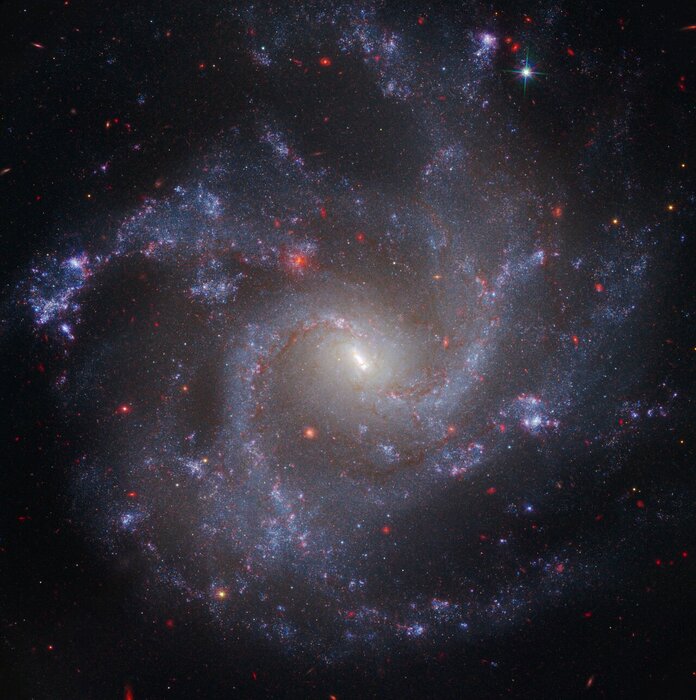Enlarge image
The main mirror of the James Webb Space Telescope
Photo: Chris Gunn / dpa
The launch of the James Webb Space Telescope from the northeast coast of South America is postponed again.
The flying observatory, which is supposed to look further into the universe than ever before, will start on December 25th at the earliest, announced the space agency Nasa.
Due to unfavorable weather conditions at the spaceport in French Guiana, the expected date has been postponed from Christmas Eve to Christmas Day between 1:20 and 1:52 p.m. German time. The new date will be confirmed after another weather forecast on Wednesday evening, it said. It is the third time that the launch of the Webb telescope has had to be postponed. The first delay was due to an accident during launch preparations in late November and the second to a communication problem.
The new telescope far exceeds its predecessor "Hubble" in size and complexity. The Webb main mirror - consisting of 18 hexagonal segments made of gold-coated beryllium metal - measures 6.5 meters in diameter and has to be folded in order to even fit into the "Ariane 5" rocket that will bring the telescope into its orbit. However, the new telescope works in the infrared range while "Hubble" observes in the visible, near-ultraviolet and near-infrared spectrum. The new instrument will be able to see through clouds of gas and dust.
The James Webb Telescope is to explore the early days of the universe around 13 billion years ago, only a few hundred million years after the Big Bang. The new telescope, named after a former director of the US space agency, was jointly developed by NASA, the European space agency Esa and the Canadian space agency CSA. The Max Planck Institute for Astronomy, the University of Cologne and several German companies also took part. With its instruments, the Webb telescope is also ideally suited for the search for potentially life-friendly atmospheres around numerous newly discovered exoplanets - celestial bodies that orbit distant stars.
The project, started in 1989, was originally supposed to go into operation in the early 2000s.
Ever new problems delayed the project, the costs tripled to around 8.8 billion euros.
If everything goes according to plan, the James Webb Space Telescope will be detached from the rocket after a 26-minute flight into space.
It will then take the instrument about a month to reach its destination in solar orbit, known as the Lagrange point L2, which is about 1.5 million kilometers from Earth - four times as far as the moon.
The Hubble Space Telescope, on the other hand, orbits the earth at a much shorter distance.
joe / Reuters / AFP













